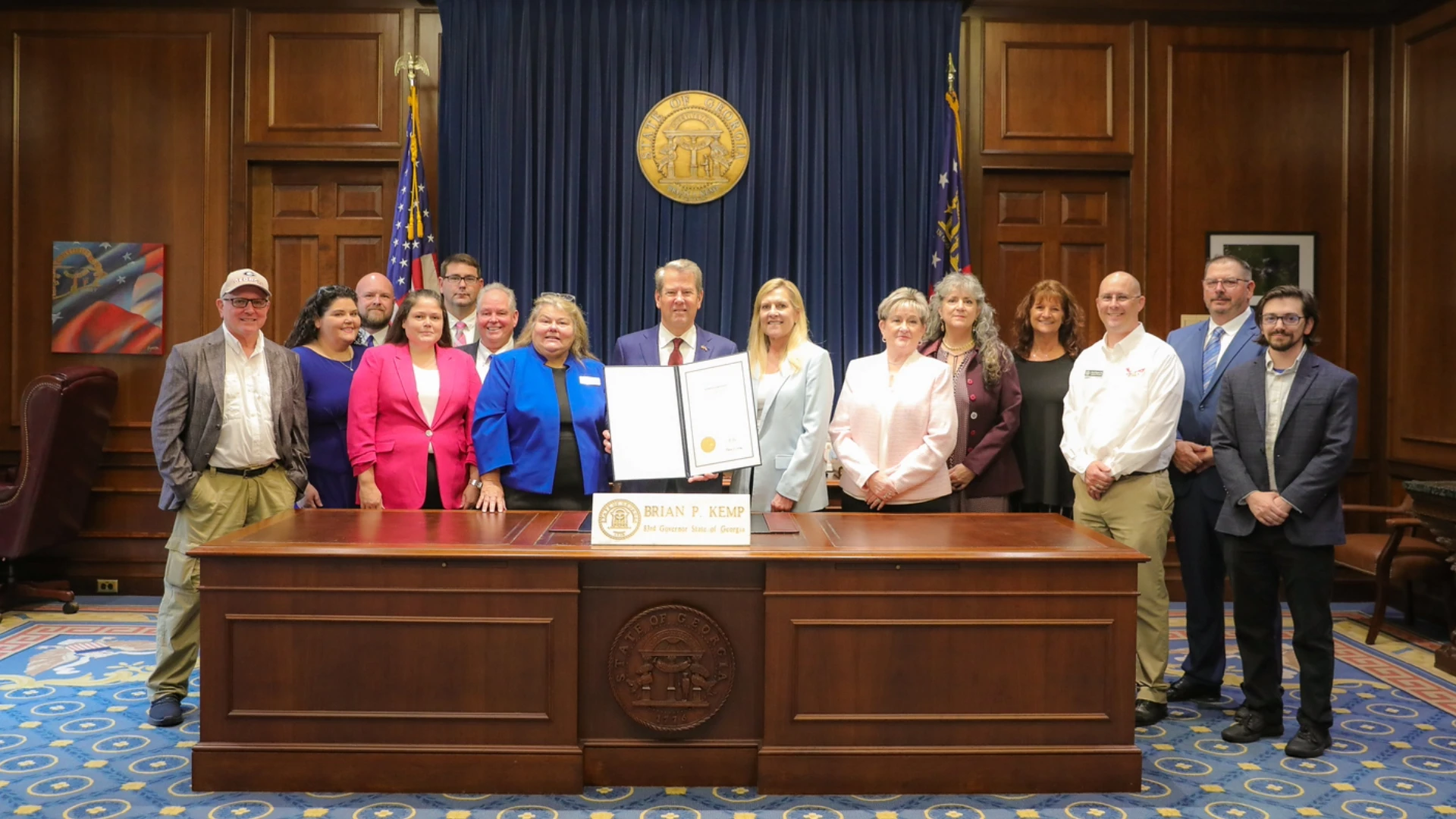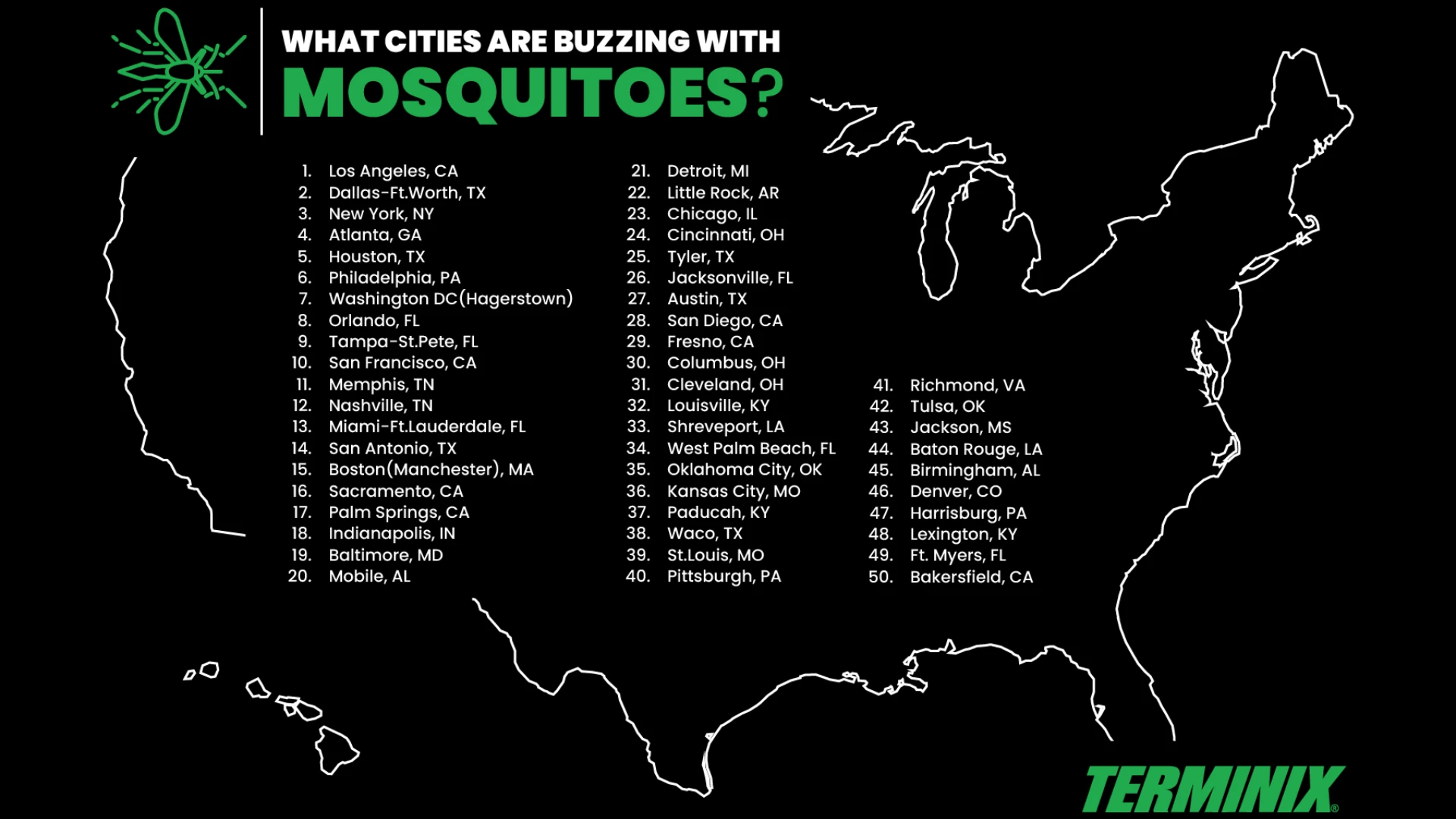
In late October 2009, the managers of Baltimore’s primary wastewater treatment plant sent out an urgent appeal to the Department of Entomology at the University of Maryland for assistance with what they described as an “extreme spider situation” in their sand filtration facility. The building is enormous, occupying a space of about four acres under a single roof — equivalent to three football fields — but with no side walls. Its purpose is to serve as an advanced, “polishing” step in the purification process, as partially treated water slowly percolates through 48 sand-filled beds prior to being discharged into the Back River, a tributary of the Chesapeake Bay.
I was part of a five-member, interagency team of arachnologists, urban entomologists and pest managers that visited the facility the following month and witnessed a spectacle that none of us had ever seen before, nor could even immediately comprehend. Peering into the dim, cavernous interior, we saw a vast world literally swallowed up by webbing. Great masses of it engulfed the equipment, blotting out much of the machinery from view. Endless sheets of it blanketed the ceiling, and in one spot had actually pulled a massive 8-foot fluorescent light fixture out of alignment (Figure 1). In places where the intrepid crew had taken brooms, poles and other tools to sweep the web away to create some access, the material lay piled on the floor in dirty coils as thick as a firehose.

And throughout it all, there were spiders beyond imagination, embedded in their communal silk by the millions, dangling down on drop lines everywhere in response to any disturbance. What was happening here?
THE STUDY. Scientists are no more immune from astonishment than anybody else, but their greatest distinguishing characteristic is the urge to measure anything that interests them. For what would seem to be an impossible mathematical task, our team used a process that is often termed “Fermi estimation,” named for the Nobel Prize-winning nuclear physicist who tackled such problems by systematically breaking them down into a series of more manageable pieces. We were fortunate that the sand filtration facility is a modular structure, consisting of various repeating architectural units. By first calculating the extent of webbing throughout representative units, then collecting standardized samples of the silk masses and counting the number of spiders they contained (Figure 2), approximations could be made of both the extent of the webbing and the spider population it contained. After weeks of painstaking analysis of the collected data, we arrived at the following totals:
- The unbroken expanses of sheet-like webbing attached to the ceiling covered about 10,443 square yards, i.e., a little more than 2 acres.
- The three-dimensional clouds of webbing totaled about 5,444 cubic yards, or roughly equivalent to the capacity of 23 standard railroad boxcars.
- The number of spiders living in the facility on the day we took the samples was more than 107 million individuals.
How reliable are these numbers? We’re confident that the amount of silk is firmly in the ballpark. Using blueprints, onsite measurements and more than 300 photos taken throughout the facility, calculating the extent of webbing was fairly straightforward. But the quantity of spiders, particularly because so many were tiny hatchlings, should be regarded in light of the cardinal rule of Fermi estimates — it is the order of magnitude (power of 10) that is far more critical than the specific integers. In other words, based on the data we collected, the most conservative way to state the size of the spider population occupying the building is that it was somewhere in the hundreds of millions.

After writing up the results, our study was published in the fall 2010 issue of American Entomologist, a quarterly magazine devoted to subjects of general interest to the entomological community. As with the overwhelming majority of scientific reports in the world, it promptly lapsed into obscurity. But in 2014, out of the blue, a startling and somewhat bizarre event occurred. In celebration of the Halloween season, writer Gwen Pearson of Wired magazine (a publication commanding a considerably greater audience than American Entomologist) resurrected a short, humorous story on the Baltimore megaweb that she had originally posted on her pseudonymous “Bug Girl” blog back in 2010. Quoting one of our introductory statements about how unprepared we had been for the sheer scale of what we saw, Gwen reminded her readers that it had been “written by five mid-career professional entomologists and arachnologists. If they were a bit startled by the size of the web…it was a big freakin’ web.”
In a flash, the Wired piece was picked up by social media around the globe, trending on hundreds of sites ranging from YouTube to the New York Daily News. What initially was amusing quickly turned unsettling as my inbox and voicemail filled up overnight with urgent requests for interviews from reporters, TV producers and filmmakers from as far away as Amsterdam. Everyone suddenly seemed to have an extreme obsession with extreme spider situations.
Predictably, the flare of attention burned out in less than a week, a vivid demonstration of Andy Warhol’s “15 minutes of fame” quip that I never want to experience again. Other than an enduring presence in one of the Internet’s more obscure corners (check out “giant Baltimore spider web” on Google), all that remains of the curious episode is a collection of colorful comments on the story that I gleaned while surfing through the blogosphere. A few of my favorites:
- “I, for one, welcome our new arachnid overlords…”
- “The agreement with the union promised a fly-free work environment. What’d you expect?”
- “The worst part was when they lost count at 105,226,717 and had to start over.”
- And, of course, dozens of suggestions for control along the lines of “I say we take off and nuke the entire site from orbit.”
THE SPIDERS. At the center of the Baltimore megaweb saga, of course, are the extraordinary creatures that created it. A total of 31,194 individual spiders (real specimens, not estimates) were extracted from the web samples, preserved and identified. Although nine genera in six families were represented, the webbing was almost entirely the product of only two species, Larinioides sericatus (which was known by the name of sclopetarius at the time) and Tetragnatha guatemalensis. Composing nearly 5 percent of the total specimens, the burly L. sericatus is a well-studied, markedly synanthropic spider that is strongly associated with man-made structures along rivers and lakes and thus would be expected to turn up at a wastewater treatment plant. Commonly named the “bridge orb-weaver,” it has been experimentally shown to actively choose locations illuminated by artificial light.
Nevertheless, L. sericatus was still a relatively minor player in the facility. The overwhelmingly hyperabundant webmaster was T. guatemalensis, a species with no common name and whose life history is still virtually unknown to biologists. Typical members of its genus are slender, very long-legged spiders that are fittingly referred to as “long-jawed orb-weavers,” due to their swollen, conspicuously protruding chelicerae (apparently an adaptation for mating). However, calling this particular species the “Guatemalan long-jawed orb-weaver,” as some writers do, makes about as much sense as “German cockroach” or “Norway rat.”
Ranging as far north as Nova Scotia (but far more likely to be encountered in Florida and south Texas), its name signifies only that it happened to be originally described from a specimen collected in Guatemala. Now having dramatically revealed itself in Baltimore as well, its domination of the sand filtration ecosystem was nothing less than spectacular, accounting for about 92 percent of the collected specimens. Of the total 28,623 individuals in our T. guatemalensis sample, 84 percent were hatchlings. In fact, since these tiny spiderlings began actively dispersing on air currents throughout the laboratory as soon as the web sections were removed from the collecting bags, it is obvious that a substantial number eluded our census.
What is it about these two species? When observed under typical circumstances, in which the solitary spiders are spaced apart throughout a given habitat, their web architecture is well within the normal bounds for orb-weavers. Those of L. sericatus are large, vertical orbs with relatively few spokes and support strands, while T. guatemalensis constructs quite fragile snares that are usually diagonal or even horizontal — nothing at all to suggest any particular aptitude for erecting colossal “arachnotopias.”
And yet, as it turns out, both species share a highly distinctive and critical behavioral characteristic. When circumstances are favorable and the spiders find themselves in increasingly close quarters, they display an unusual tolerance not only for others of their kind, but other types of orb weavers as well. As densities build up and individual webs begin to spatially overlap, a growing number of non-orb silk lines are produced, linking webs together and blurring their original boundaries. Bit by bit, spiders begin venturing away from their original spots (laying down more silk as they go) and wander further into what increasingly becomes a truly communal structure. Over time, the scale of the phenomenon is limited mainly by three factors: availability of food, availability of a framework (manmade or vegetative) on which to anchor the webbing, and the absence of severe weather that would destroy an expanding silken city.
Perhaps most surprising is how often this type of megaweb occurs both in nature and in or on human structures. Although the example in the sand filtration facility was far greater in magnitude than any previously recorded aggregation of orb-weavers, it was by no means unique. Still the most celebrated instance was a huge expanse of webbing enveloping trees in 2007 along a woodland trail at Lake Tawakoni State Park in Texas. Dubbed by the media as the “giant Texas web,” and publicized by exceptionally haunting photographs of the spectacle, the primary spider involved was also T. guatemalensis, as well as another Larinioides species. The online response to the story was a good example of inadvertent crowdsourcing in the interests of science, as photos and descriptions of other large masses of tetragnathid-dominated webbing on vegetation began to proliferate on the Web (alright, I finally said it). Lesser known examples of Larinioides-dominated megawebs (all three U.S. species display the same knack for diminished aggression toward neighbors in times of plenty) can be found in the arachnological literature. The two most extreme involved the interior of a power plant wheelhouse on a lake in Alberta and the exterior of an arena on the Ohio River. And so, what appears to be the universal causal agent of these events comes into focus.

THE SYSTEM. Obviously, spider populations, gigantic and otherwise, are driven by prey abundance. Less apparent as the keystone factor for pushing the envelope of gregarious behavior among normally solitary species is the proximity of significant bodies of water. So far, no orb-weaver megaweb has ever been recorded that was not close to a lake or a river. Indeed, several lakes in the arid Southwest, the only water around for miles, are famous for extraordinarily dense spider aggregations along their shores. Perhaps the most well-known of these is Walker Lake in Nevada, which hosts massive billows of interconnected webbing packed with Western spotted orb-weavers (Neoscona oaxacensis) every summer. However, since the tallest vegetation over most of the area is sagebrush, the necessary framework to support a towering, integrated megaweb is not available.
Of course, what water brings to the system is an incomparable bounty of spider food. Only large aquatic habitats are ecologically capable of reliably producing the mighty “blooms” of flying insects necessary to continuously satiate the appetite of an epic assemblage of orb-weaving spiders, thus triggering the pronounced complacency towards neighbors that allows communal behavior. And of all of the many different types of insects that live in freshwater as immatures and mate in the air by the billions as winged adults, non-biting midges in the family Chironomidae — sometimes called “fuzzy bills” in the mid-Atlantic, due to the conspicuous, plumose antennae of the males — reign supreme as the dominant prey for orb-weavers over much of the globe. Our story is thus fundamentally a tale of flies.
For some reason, the hordes of midges that routinely swarm over the Back River and along its banks, driving residents, boaters and marina operators crazy with their sheer numbers, started to get unusually dense a few years prior to the sand filtration facility’s extreme spider situation. The river has long been degraded by sewage, storm-water runoff and other pollutants from urban development throughout its watershed and is considered to have some of the poorest water quality in the Chesapeake Bay region. Some midge species thrive in such conditions since they are highly adapted to living in muck that is virtually anoxic. In an effort to understand why the midge population had exploded, sampling of their tiny, bright red larvae (often called “bloodworms”) from the river bottom by Baltimore County natural resources personnel coincidentally began in the autumn of 2009, just as the megaweb was being documented. Densities of up to 6,000 larvae per square meter were recorded. Normally, this type of staggering productivity would be a boon for fish and other predatory aquatic organisms. In their absence, due to the exceptionally noxious water quality, the greatest beneficiaries were the spiders.
As it turned out, the sand filtration facility’s infestation had an additional, ironic twist. The fact that its overarching roof provided the arachnid community with shelter from the elements, allowing the greatest possible expression of web construction, has been noted. But the building’s second critical asset was that it reliably and continually generated a significant portion of the spiders’ food supply. As we eventually discovered, and which has been extensively documented in other sewage treatment plants as well, the warm, nutrient-rich sediments of the huge sand beds were teaming with blood worms. The facility was truly a self-contained, gigantic spider-rearing biosphere, producing an inexhaustible food supply that exceeded the ability of any predator to deplete (Figure 3). It wasn’t just located in optimal spider habitat — it WAS the habitat. Year after year, the arachnotopia is renewed mainly from egg sacs deposited onsite (Figure 4) and fed mainly on midges grown onsite.

The inability to control a pest population’s food supply significantly limits the available management options. Furthermore, the use of pesticides is clearly not an activity that is appropriate for a plant that discharges treated water into an already troubled river. The strategy that has so far prevented a return of the astounding conditions of 2009 is simply treating web and spider removal in the facility as a recurring custodial function that is accomplished by basic mechanical means.
Besides, the building has become something of a unique scientific resource. Four years after the megaweb study, the Smithsonian Institution members of our original team requested a return visit for an unusual purpose. One of the National Museum of Natural History’s newest and most exciting megaprojects is termed the Global Genome Initiative, whereby genetic samples of as many of the Earth’s life forms as possible are flash frozen in liquid nitrogen for future DNA sequencing — essentially taking the museum’s preservation and study mission to the next level. The desired sample size to experimentally determine the best protocol for doing this is 280 specimens of the same species. And when it comes to spiders, where could this be carried out in the most efficient manner? On Aug. 6, 2013, despite radically reduced webbing in the sand filtration facility, four researchers easily collected 437 T. guatemalensis in little more than an hour. As the flagship arachnid in the Smithsonian’s genome study, it’s safe to say that this remarkable species’ relative anonymity is rapidly coming to an end.
WANT MORE?
Enter your email to receive our newsletters.

Explore the December 2015 Issue
Check out more from this issue and find your next story to read.
Latest from Pest Control Technology
- Pestmaster of the Hudson Valley Acquires Catskill Animal Damage Control
- Photo Slideshow: Ant Identification Tips
- Video: Top 10 PCT Photo Contest Finalists
- UF/IFAS Study Reveals Boats as Perfect Vessels for Global Termite Spread
- Pest Control Consultants (Iowa) Earns Pinnacle Performance Award
- Syngenta's Chris Keefer Reviews Ant Control, Products in Latest Ant Market Report
- PCT/BASF Launch 2025 Technician of the Year Awards Program
- Target Specialty Products, MGK Partner for Mosquito Webinar








